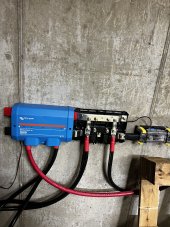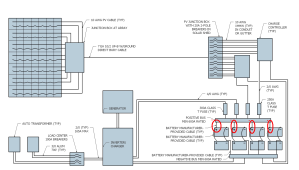AlaskanNoob
Solar Enthusiast
- Joined
- Feb 20, 2021
- Messages
- 907
My MPPT has two DC positive terminals, and two DC negative terminals. Same with my Quattro. So could I wire one of the positives to one positive bus bar, and the other two another positive bus bar (mirrored with two negative bus bars) and have one bus bar tied into four batteries, and the other tied into four other batteries?
Or do I need to bridge the two bus bars to make one larger bus bar?
Or do I need to bridge the two bus bars to make one larger bus bar?






